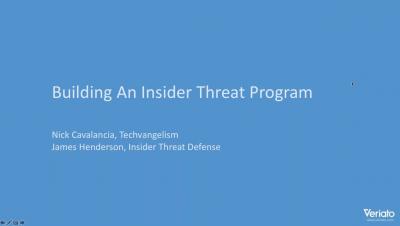Security | Threat Detection | Cyberattacks | DevSecOps | Compliance
%term
Behind the Scenes of Availability: How it's evolving and what that means to your business
Detectify | Meet the Hacker - Fredrik Nordberg Almroth
Logsign Symantec Advanced Threat Protection (ATP) Integration
Logsign is seamlessly integrated with Symantec Advanced Threat Protection (ATP). Let’s see how. Types of events detected by Symantec Advanced Threat Protection.
Why Is Logging Ecosystem So Important?
The logging ecosystem or a logging infrastructure is the set of all components and parts that work together to generate, filter, normalize, and store log messages. The purpose of this logging system is to use logs for solving particular problems. For example, the logs can help to find out the source of the attack. This article defines each component of logging ecosystem and illustrates how they work.
Building An Insider Threat Program
Threats from within
Cyber security is a big deal these days. A very big deal. A deal worth £3.5billion to be precise. The threats are varied and numerous, with attackers constantly shifting their methods and approach to circumvent security. No matter how good cyber security gets and how thorough your processes are, the threat will always remain. What’s interesting here is that a large portion of this threat comes from within your own walls.
Communication: A Significant Cultural Change for Embracing DevOps
Organizations can reap huge rewards by switching to a DevOps software development model. Some enterprises don’t know how to make the change. Recognizing that fact, I’ve spent the past few weeks discussing the benefits of a DevOps model, outlining how organizations can plan their transition, identifying common problems that companies commonly encounter and enumerating steps for a successful conversion. Of course, organizations aren’t finished once they’ve fully embraced DevOps.
The Five Stages of Vulnerability Management
A key to having a good information security program within your organization is having a good vulnerability management program. Most, if not all, regulatory policies and information security frameworks advise having a strong vulnerability management program as one of the first things an organization should do when building their information security program. The Center for Internet Security specifically lists it as number three in the Top 20 CIS Controls.
36 Computing Milestones Every Tech Person Should Know
I was recently asked what I thought were the most significant points in the history of computing. It made me realize most people coming into high tech don’t have a basic understanding of the history of computing, which is important to understand future trends, how products work, and the relationships among computing elements in the technology stack.








